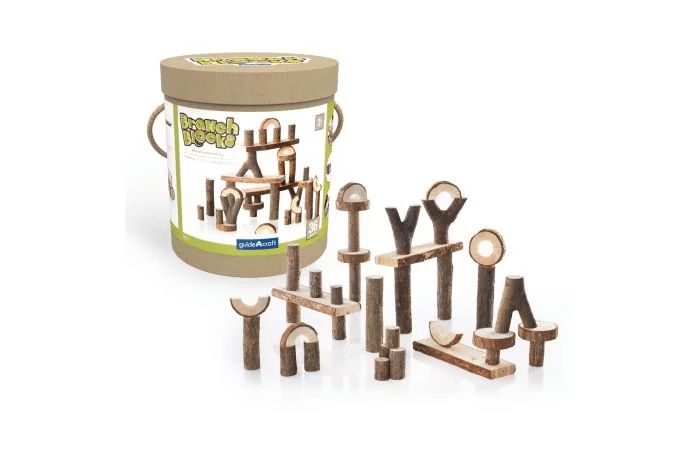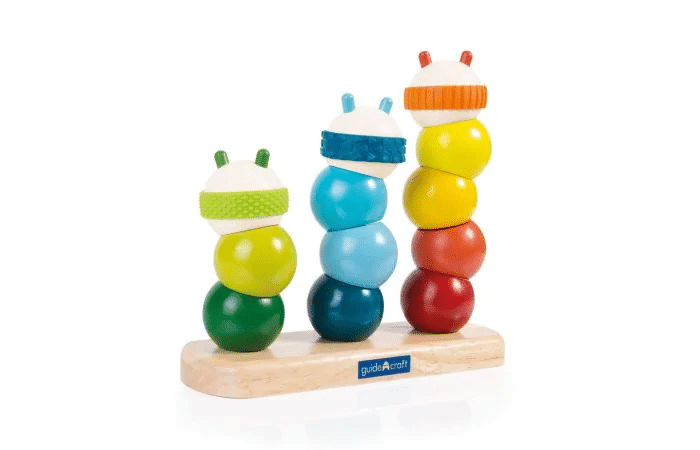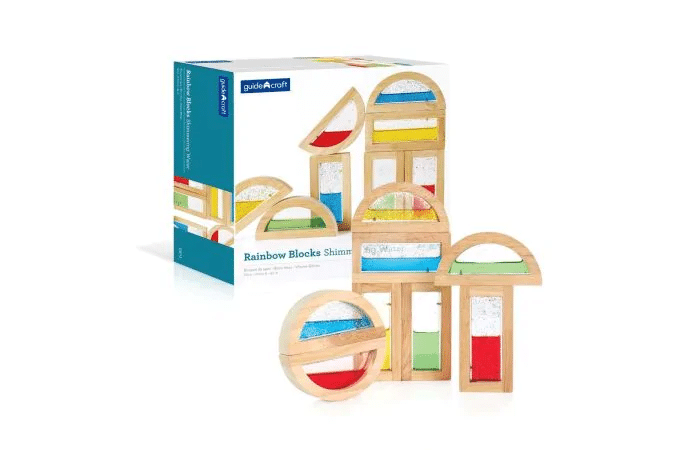
Stacking toys are so simple but provide complex benefits to your child’s growth and development. Children use their fine motor skills to place each piece on top of another. They use core control to keep themselves upright while grabbing and placing objects. Kids even use their imagination when they pretend, they’re building a castle before becoming a dragon and knocking it down.
Stacking toys are the ultimate multipurpose learning tool one can use for babies and young children. We’re going to talk about why stacking toys are important in Montessori learning and how these toys benefit cognitive, social-emotional learning, creativity, and exploration.
Stacking Toys in Montessori Learning
In Montessori learning, toys are commonly made of wood and other natural materials. Natural materials help children independently learn about the world around them. If you take a second to think about it, what is going to help your child recognize real life things more, a wooden toy or a plastic toy flashing lights?
If unnecessary noise and overstimulation aren’t your jam, it may be time to overhaul your child’s toy shelf and replace some of their toys with Montessori-style toys instead. If you’re looking to add the Montessori touch to your child’s playroom, consider a stacking toy from the Alphabet Trains & Toys collection.
Guidecraft 36 Piece Stacking Branch Blocks
These durable wooden blocks look just like real tree branches. These stacking branch blocks add the perfect touch to a natural woodland aesthetic and the blocks feel like real bark. So, not only do you get the natural look, but your child gets to have a tactile sensory experience too! This stacking toy is perfect for families who want to bring a natural vibe to their child’s playroom.

If your child likes playing with a little more guidance, you can download an activity guide on the Alphabet Trains website to get them started. Keep in mind, the set comes with small pieces, so it’s best for children 3 years and older.
Guidecraft Caterpillar Stacking Toy
If you like wooden toys but you don’t want to sacrifice vibrant coloring in your child’s toys, the Guidecraft caterpillar stacking toy is the perfect addition to your shelf.

Toddlers and young children have the opportunity to match each ball to like colors or they can mix and match their own caterpillar creations. These sets are also compatible with each other, so your child can use multiple sets to create bigger caterpillars!
Guidecraft Shimmering Water Rainbow Blocks
Take your child’s block play to the next level with these rainbow blocks. Not only do they have a transparent inside, but the inside is filled with glittery water and what young child doesn’t love all things sparkles?

The set comes with eight different shapes that can be stacked on top of or next to each other for endless hours of play. Not only does this toy help with shape recognition, but it’s a great tool for introducing primary and secondary colors too!
Cognitive Benefits of Stacking Toys
Your cognitive health is measured by how you learn, how well you focus, your ability to make and store memories, and how you cope with high stress situations.
Stacking toys help enhance cognitive abilities by introducing children to concepts like big and small and differences in color. For example, as a child learns how to stack from biggest to smallest, they have to tap into their memory of previous attempts in order to achieve the correct sequence.
Encouraging Creativity and Exploration
Not all stacking toys are created equally. While some may have specific instructions (i.e. order biggest to smallest), others may be more open-ended, like the wooden stacking branch blocks we mentioned previously.
The stacking toys we covered in this article all give children the opportunity to use their imagination and get creative. Sure, the general premise of a stacking toy is to stack from biggest to smallest, but what happens when you switch that order around? What happens when you take one of the middle pieces away?
These are all questions your child may ask themself when playing with a stacking toy and it’s important to let them ask these questions and test out their theories.
Boosting Fine and Gross Motor Skills
Fine motor skills are the skills you need to use your hands and fingers to move and manipulate different objects. Your fine motor skills also come into play with hand-eye coordination. Stacking toys are great fine motor activities due to the nature of having to reach for, grasp, and place each piece without knocking the tower over.
For younger children, this may look like the use of both hands to grasp each piece to place it down. As a child gets older, they will eventually learn to grasp each piece with one hand or even a few fingers.
On the other hand, gross motor skills refer to how you use the muscles in your legs, arms, and core. Most stacking toys are designed for babies as young as 6 months old. These stacking toys, like the TAG Toys Montessori Colorful Stacking Ring, help babies work on trunk control, which is an integral part of learning to sit up on their own. As they get more confident, babies continue to work on their core as they have to balance unassisted while grabbing and stacking each piece.
Stacking toys help children develop their fine and gross motor skills by engaging both the brain and the body.
Taking the Montessori Approach to Stacking Toy Play
When kids play with blocks and stacking toys, they work their bodies and minds to achieve a goal. Whether it’s their fine motor skills stacking each piece in order, or their creativity and imagination building a castle, children truly work while playing with stacking toys.
Alphabet Trains & Toys has an expertly curated collection of stacking toys for babies, toddlers, and children that are sure to impress even the pickiest child.
